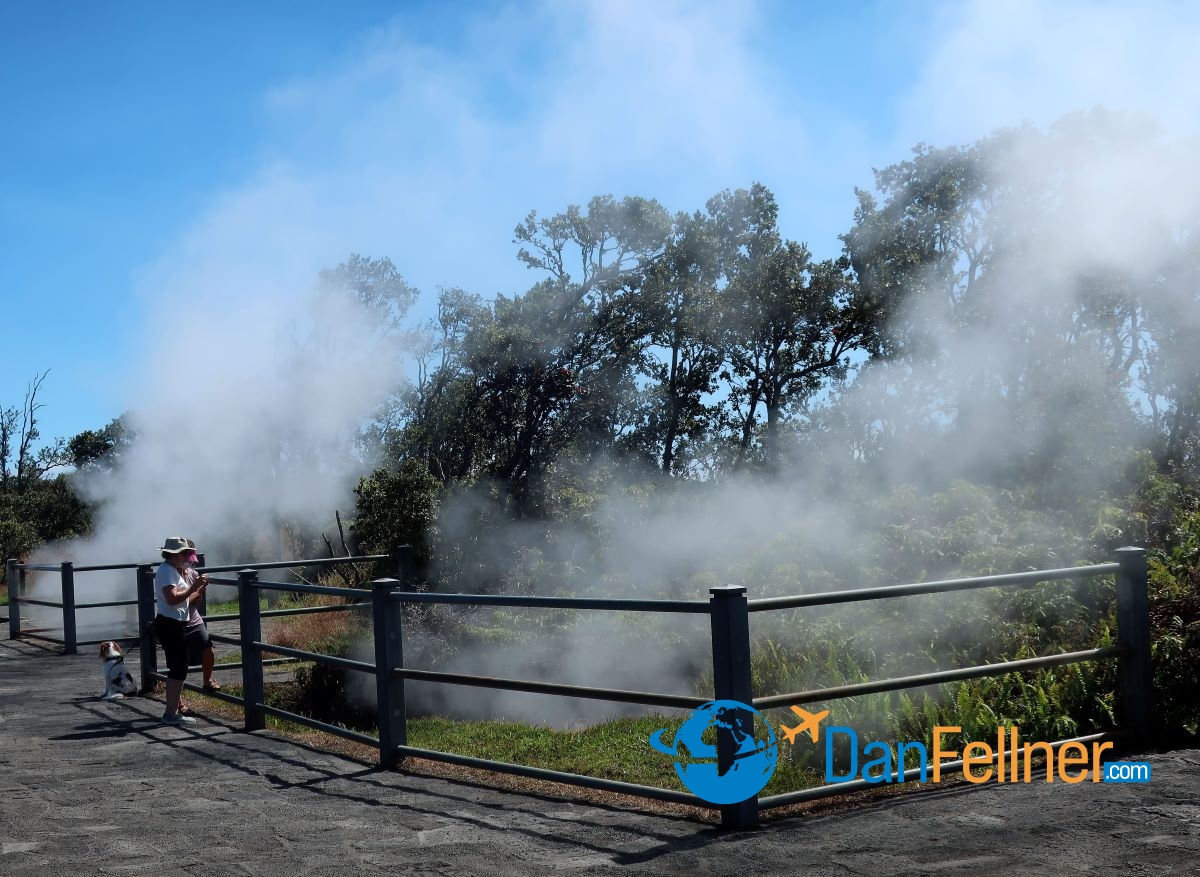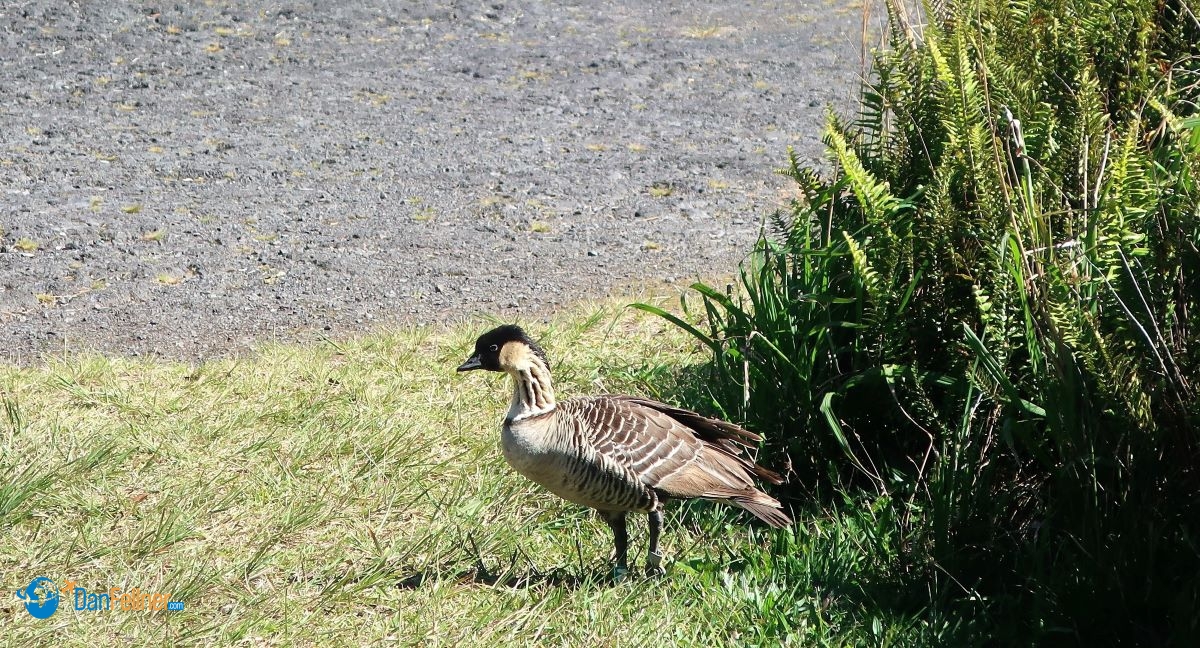After two-year pandemic-related absence, cruisers return to explore Kilauea volcano, waterfalls and historic temples
The USA Today — February 7, 2022
HILO, Hawaii – While cruising in the Hawaiian Islands is just now returning to life after a two-year pandemic-related hiatus, Tūtū Pele has been far from dormant.

The Holland America Koningsdam anchored off the coast of Kailua-Kona, Hawaii.
The legendary Hawaiian goddess of volcanoes has been busy flexing her muscles and cleansing the Earth in the place where many Hawaiians believe she resides — the famed Kilauea volcano in the south-central part of the Big Island of Hawaii.
My late January visit to the top of Kilauea and the surrounding Hawaii Volcanoes National Park — a UNESCO World Heritage Site — was one of the highlights of a recent 17-day cruise to the Hawaiian Islands on the Holland America Koningsdam.
Hawaii cruises resumed in January 2022
I was aboard the first Holland America ship to return to Hawaii since November 2019. Other cruise lines, including Carnival and Princess, also resumed Hawaii sailings in January.

A tender from the Holland America Koningsdam ferries passengers to the town of Kailua-Kona on the western side of the Big Island of Hawaii.
The cruise, heavy on sea days, started and ended in San Diego. After a stop in Catalina Island — 22 miles west of mainland California — we were at sea five days before reaching Honolulu on the island of Oahu. We also visited Maui and spent three days exploring Hawaii’s Big Island — so named because it’s larger than all of the other Hawaiian Islands combined.
We were anchored for two days off the coast of Kailua-Kona on the Big Island’s relatively dry western side, home of most of the island’s resorts.

Two ki’i — wooden images of Hawaiian gods — at the Pu’uhonua o Honaunau National Historical Park in Kona, Hawaii.
In Kona, we toured coffee plantations and hiked through a “cloud forest” on the slopes of the Hualālai Volcano, 3,000 feet above sea level. We also visited the Puʻuhonua o Hōnaunau (Place of Refuge) National Historical Park, where ruling chiefs would grant absolution to Hawaiian lawbreakers and vanquished warriors.
On our final day in Hawaii, the Koningsdam was docked on the more tropical eastern side of the island in Hilo, a gateway to picturesque waterfalls and Hawaii Volcanoes National Park.
Hilo is the rainiest city in the United States, averaging 211 days of precipitation each year. Fortunately, we had sunny skies, ideal for viewing the snow-capped Mauna Kea volcano. Its peak is 13,803 feet above sea level, making it the highest point in the state.

Rainbow Falls on the Wailuku River near Hilo, Hawaii.
Kilauea’s spiritual significance
Visitors to Kilauea’s 4,000-foot-high summit can see a constant eruption of volcanic gases that have been spewing from its caldera since 1983. The result is an ever-changing landscape of black lava fields, steam vents, underground lava tubes and basaltic rock formations.
For Hawaiians, Kilauea is much more than a scenic mountain that glows at night during eruptions. It’s a wahi kapu — sacred place — that has deep spiritual significance.
It’s believed that Pele, short for Pelehonuamea, inhabits Kilauea and its even larger but less active neighbor to the west, Mauna Loa. Hawaiians often refer to the goddess as Tūtū — grandmother — as a sign of fondness and respect.

The Kilauea caldera spews a steady stream of volcanic gases.
If ever there were an aptly named volcano, it would be Kilauea, which means “much spreading” in the Hawaiian language. Tūtū Pele’s burning lava flows have caused significant property damage to farms and homes as recently as 2018. Another eruption — thus far low-key — started last September within the Halema’uma’u crater, the volcano’s most active vent.
Kilauea’s eruptions: ‘We refer to it as creation’
Kainoa Delacruz, our onboard “Hawaiian Cultural Ambassador,” told me that despite Pele’s occasional outbursts, most Hawaiians don’t fear the deity.
“When she erupts, we don’t refer to what she does as devastation,” said Delacruz, who has been lecturing on cruise ships for 20 years. “We refer to it as creation. While she’s burning everything down, she’s really cleaning. It’s not looked as a negative thing to have her roll her lava over everything. We know that things will come back even better.”

Hikers walk across a lava field with unusual rock formations at the Hawaii Volcanoes National Park on the Big Island of Hawaii.
I especially enjoyed hiking past extraterrestrial-like rock formations through one of Kilauea’s many black lava fields. Along the way, we encountered several nene, also known as the Hawaiian goose. The nene is Hawaii’s official state bird.
We also stopped to see the Wahinekapu steam vents, where hot-water vapor continuously billows from cracks in the earth. Hawaiians come to the vents to place leis and other adornments as offerings to Pele.

Hot water vapor continuously billows from cracks in the earth at the Wahinekapu steam vents on the Kilauea volcano.
On the drive from the ship in Hilo to Kilauea, we stopped at two waterfalls — Akaka and Rainbow. With a height of 442 feet, Akaka is more than twice as tall as Niagara Falls. Seeing it up close involves an easy half-mile hike on a loop trail.
COVID-19 protocols on our Hawaii cruise
Passengers were required to register prior to the cruise with the state at https://travel.hawaii.gov and upload proof of vaccination. We were then emailed a QR code to display to local authorities when we got off the ship in Hawaii.

Kainoa Delacruz presents a lecture about Hawaiian culture in the main theater on the Holland America Koningsdam.
Additionally, Holland America required us to produce a negative, medically observed viral COVID-19 test taken no more than two days before sailing. We were tested again at the cruise terminal in San Diego prior to embarkation. Two days later, following our first port stop in Catalina Island, we were tested again on the ship.

A paddleboarder glides past the Ahuena Heiau Temple, once the residence of Hawaiian King Kamahameha the Great, in Kailua-Kona, Hawaii.
Masks were required to be worn throughout the cruise, except when we were actively eating or drinking, in our own cabins or on outside decks where we could socially distance. We were each given several KN95 masks. From what I observed, a vast majority of my fellow passengers were compliant of the mask rule — even when dancing at one of several music venues on the Koningsdam.
The 2,650-passenger ship — the largest in Holland America’s fleet — was about half full. More than 90 percent of the passengers on the sailing were Americans.

A nene, also known as the Hawaiian goose, at a lava field in Hawaii Volcanoes National Park. The nene is the official state bird of Hawaii.
A downside of being on one of the first cruise ships back in Hawaii was that the local tour operators seemed rusty. Some of the excursions I took were disorganized and the guides were clearly out of practice — understandable after more than two years of having few tourists to take sightseeing.

Hawaiian dancers perform onboard the Koningsdam.
But that in no way marred the experience of seeing Kilauea and her sister volcanoes in all their grandeur. It’s been a rough couple of years for Hawaii’s tourism industry. Now, the cruise ships — and tourism dollars — are starting to come back. And Pele, according to Hawaiian legend, continues to regenerate and breathe new life into her surroundings.
“This current eruption is just an indication that Pele is playing in the front yard,” said Delacruz. “Everything is OK.”
Websites for more info:
Hawaii Volcanoes National Park
Holland America Line

© 2022 Dan Fellner



